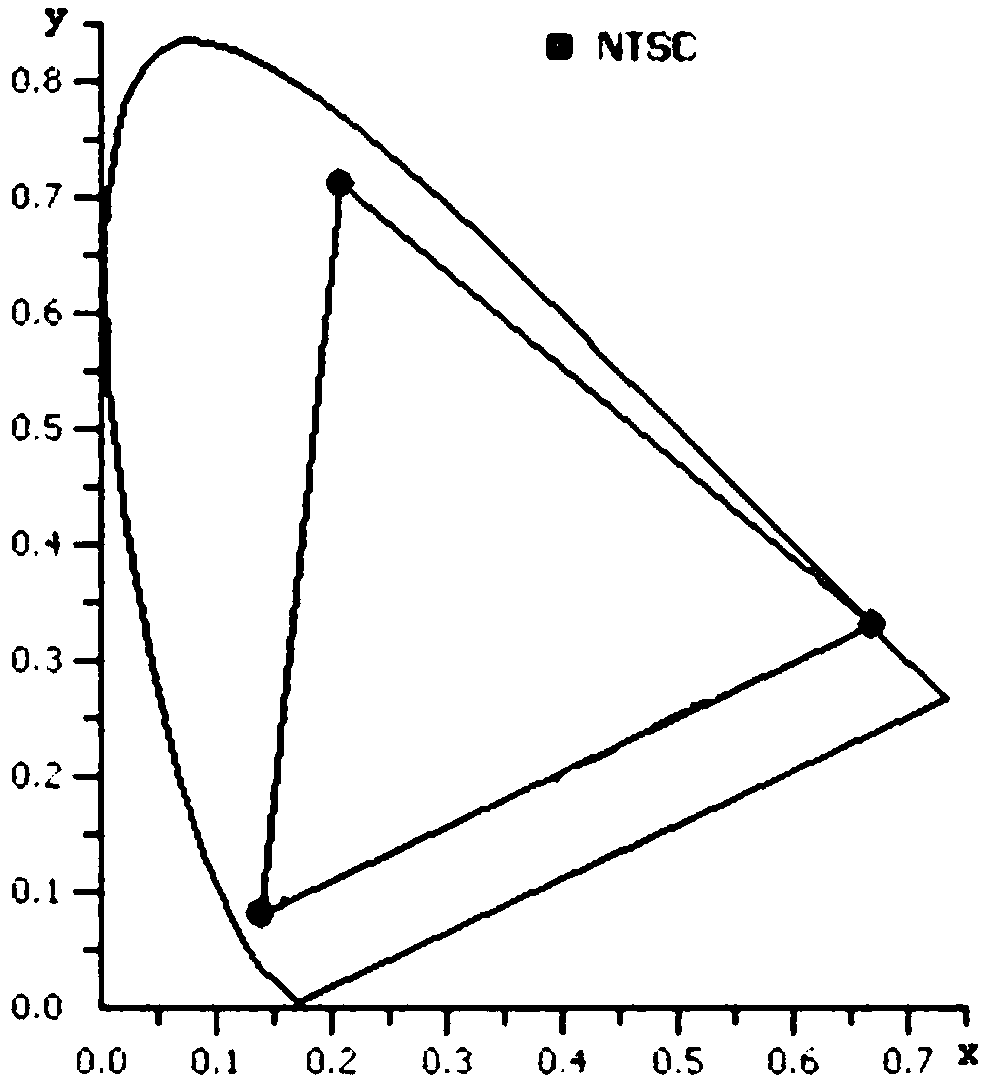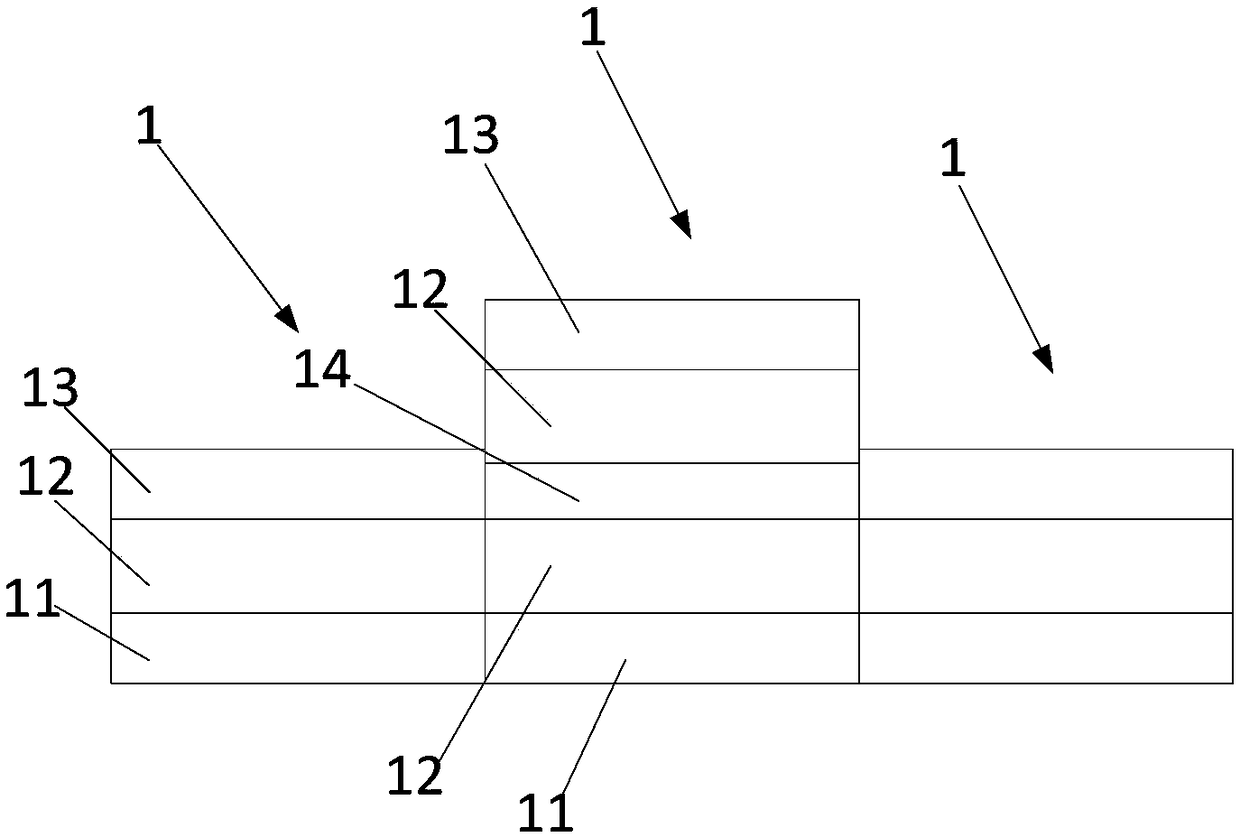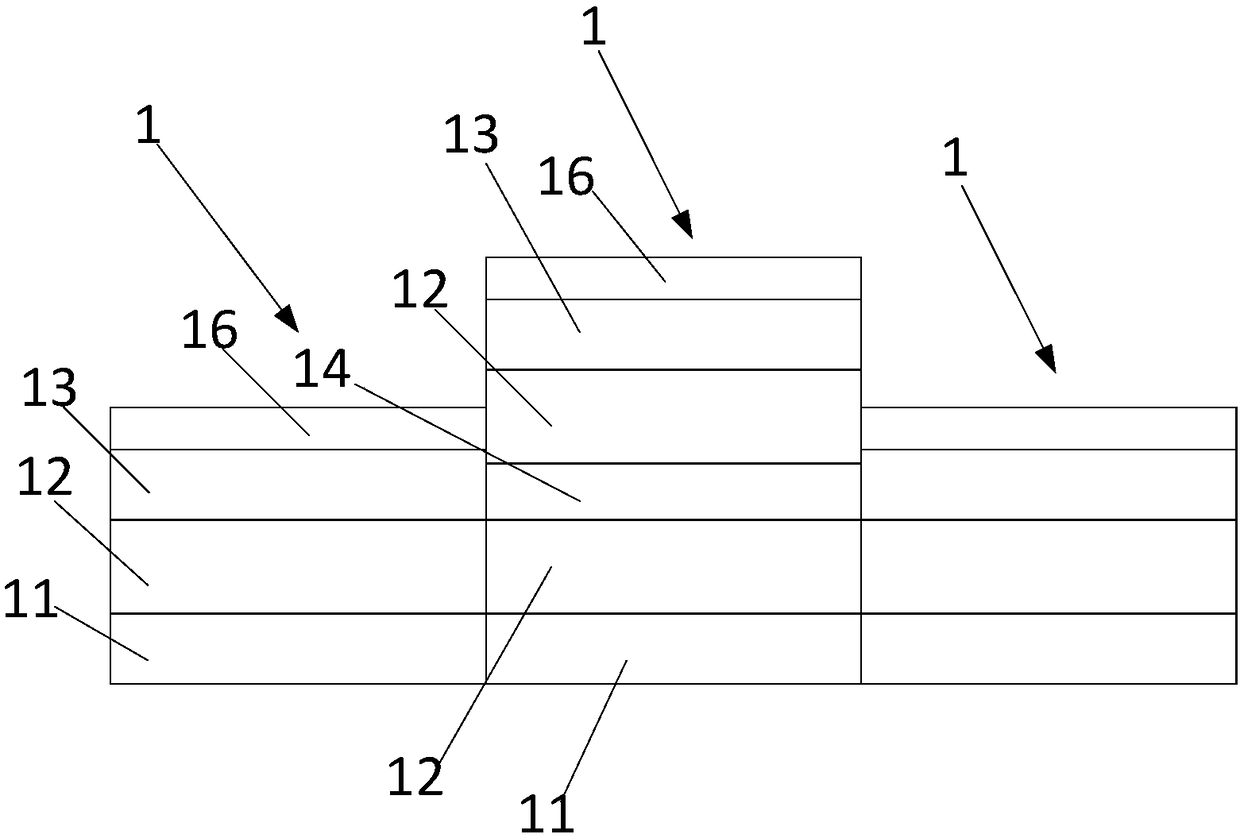Organic electroluminescent device
An electroluminescence device and electroluminescence technology, which are applied to circuits, electrical components, electric solid devices, etc., can solve the problem of insufficient color gamut of OLED devices, and achieve the effect of improving luminous efficiency and utilization rate
- Summary
- Abstract
- Description
- Claims
- Application Information
AI Technical Summary
Problems solved by technology
Method used
Image
Examples
Embodiment 1
[0089] The embodiment of the present invention provides a specific example of an organic electroluminescence device. The organic electroluminescent device in this embodiment includes monochromatic organic light emitting diodes with three light emitting wavelengths, namely red organic light emitting diodes, green light organic light emitting diodes and blue light organic light emitting diodes. Among them, the three organic light emitting diodes all have a microcavity structure.
[0090] Each organic light emitting diode includes a first electrode layer, a light emitting layer and a second electrode layer which are stacked. Wherein, there are two light-emitting layers in the green organic light-emitting diode, and the two light-emitting layers are connected through a transparent connection layer, and the transparent connection layer is Li 2 CO 3 / HAT-CN / TAPC with a thickness of 50nm and a refractive index of 1.8. Blue light and red light organic light emitting diodes each hav...
Embodiment 2
[0098] The embodiment of the present invention provides a specific example of an organic electroluminescence device. Its structure is the same as embodiment 1, and the difference with the organic electroluminescent device that embodiment 1 provides is:
[0099] Both red and green OLEDs have two light-emitting layers, and blue OLEDs have one light-emitting layer.
[0100] The device structure of the red organic light-emitting diode in this embodiment is: ITO (10nm) / Ag (100nm) / ITO (10nm) / CuPc (20nm) / TPD (70nm) / CBP:Ir (piq) 3 (3%,30nm) / TPBi(40nm) / Li 2 CO 3 (1nm) / HAT-CN(10nm) / CuPc(20nm) / TPD(70nm) / CBP:Ir(piq) 3 (3%, 30nm) / TPBi(40nm) / LiF(1nm) / Mg:Ag(20%, 15nm) / NPB(60nm).
Embodiment 3
[0102] The embodiment of the present invention provides a specific example of an organic electroluminescence device. Its structure is the same as that of Embodiment 1, and the difference from the organic electroluminescence device provided by Embodiment 1 lies in that the thickness of the hole transport layer in the green organic light emitting diode is different.
[0103] The device structure of the green organic light-emitting diode in this embodiment is: ITO (10nm) / Ag (100nm) / ITO (10nm) / CuPc (20nm) / TPD (30nm) / CBP:Ir (ppy) 3 (10%,30nm) / TPBi(40nm) / Li 2 CO3(1nm) / HAT-CN(10nm) / CuPc(20nm) / TPD(30nm) / CBP:Ir(ppy) 3(3%,30nm) / TPBi(40nm) / LiF(1nm) / Mg:Ag(20%,15nm) / NPB(60nm)
PUM
 Login to View More
Login to View More Abstract
Description
Claims
Application Information
 Login to View More
Login to View More - R&D
- Intellectual Property
- Life Sciences
- Materials
- Tech Scout
- Unparalleled Data Quality
- Higher Quality Content
- 60% Fewer Hallucinations
Browse by: Latest US Patents, China's latest patents, Technical Efficacy Thesaurus, Application Domain, Technology Topic, Popular Technical Reports.
© 2025 PatSnap. All rights reserved.Legal|Privacy policy|Modern Slavery Act Transparency Statement|Sitemap|About US| Contact US: help@patsnap.com



